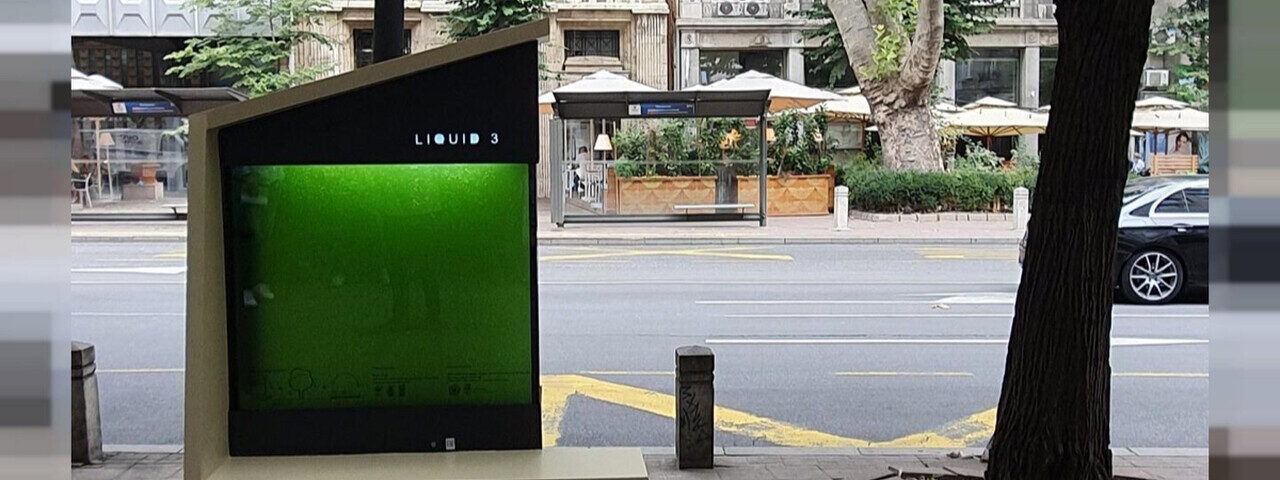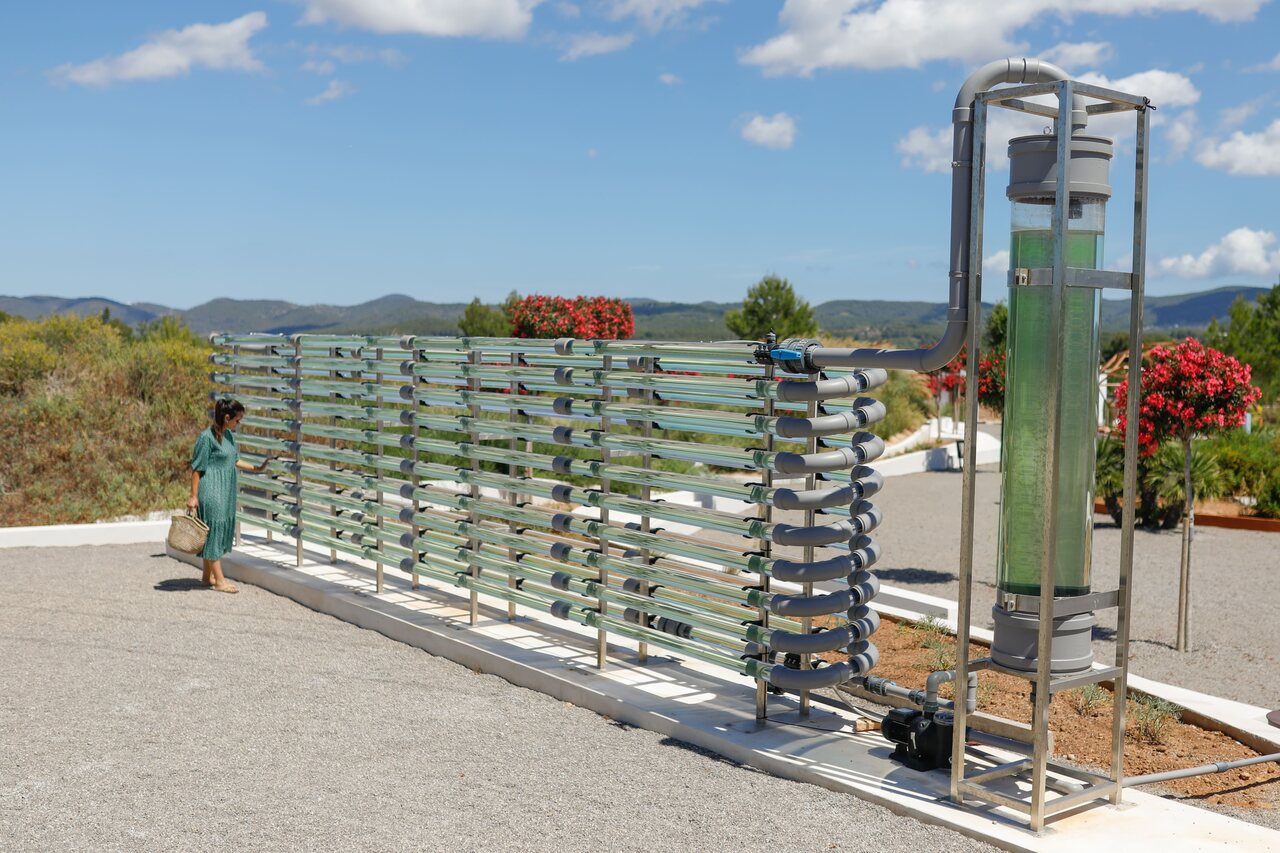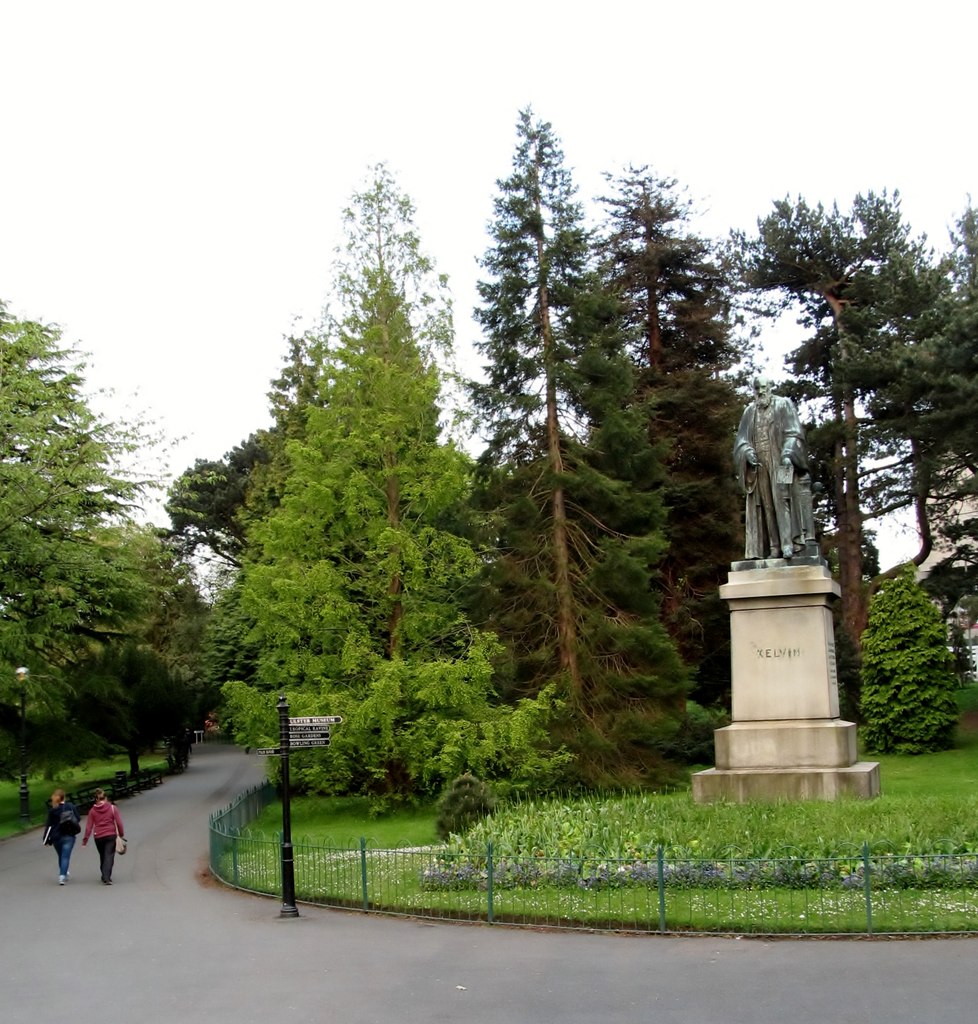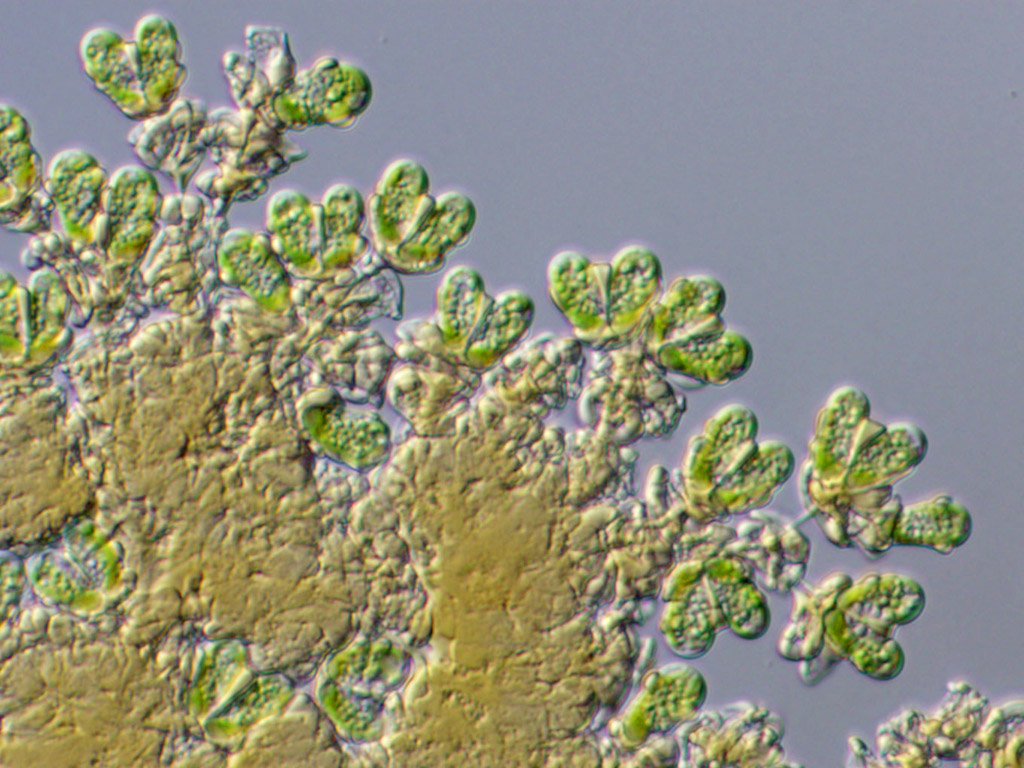
Winter means many things to many people, but for a vast number of the religious and secular alike, it means putting a decorated conifer in your living room (or some imitation thereof) and putting colourfully wrapped presents around the base. Once the Season of Giving is passed, the tree will (hopefully) be gone too; but what if there were an imitation tree that were a gift itself? One that kept on giving?
Photobioreactors & the “Liquid Tree”
Belgrade, Serbia, has earned the dubious distinction of being the fourth most polluted city in the country. The primary reason of this environmental situation are the two large coal power plants situated nearby. Amidst this environmental inconvenience, the University of Belgrade headed by Dr. Ivan Spasojevic’s department, has responded with innovation, unveiling a groundbreaking solution known as the LIQUID3 “Liquid Tree”. This pioneering technology serves as Serbia’s first urban photobioreactor, conceived to confront the escalating challenge of greenhouse gas emissions and enhance air quality in densely populated urban landscapes.
At its core, any photobioreactor is a housing and circulation unit for water and algae. Usually a type of cyanobacteria although mosses can be grown the same way, with a light source for photosynthesis. Various nutrients are added regularly to help the algae grow. This is where the popular nutritional supplement spirulina comes from, as the protein products of Arthrospira platensis and Arthrospira maxima.
The Liquid Tree is aiming to focus on the photosynthesis side of things to bind carbon dioxide (CO2) and particulate matter from the air and create pure oxygen. It consists of a 600-litre tank, filled with the water & algae, topped with solar panels that can power the lights of the tank at night. The pictures give the impression of a green fish tank paired with a concrete park bench. In this case though, the green is the algae we want to breed. It uses Chlorella vulgaris, a much hardier algae than either of the Arthrospiras, capable of surviving Serbian winters.

Why not just plant more solid trees?
The sad truth of polluted urban areas is that it’s actually quite difficult to plant fully-grown trees in them; they lack the space and nutrient-rich soil trees require to grow, their roots can interfere with vital infrastructure and the trees themselves tend to have shorter lifespans.
There’s also the raw efficiency of algae to factor in: 1kg of algae can sequester 1.83kg of CO2 per day, while an entire acre of maple forest only sequesters 2.2kg per day; They also grow 10 times faster and require 10 times less water. Time is a factor too: A liquid tree has the equivalent CO2-binding capacity of two 10-year-old trees or 200m2 of lawn and is ready to start immediately after installation. Maintenance would be a factor, but theoretically they can pay for themselves, as the aforementioned nutrients can come from wastewater which they would then clean. Certain species of algae even have alchemical levels of inventiveness, able to break down chemicals like estradiol (oestrogen to the likes of you and me), a common byproduct of modern life that frequently enters the ecosystem and can cause issues for fish and frogs.
It is imperative to underscore that the liquid tree’s objective is not to supplant natural forests but to serve as a strategic intervention in urban pockets where conventional tree planting proves impractical. The UK Woodland Trust’s chief executive Sue Holden has said “the [UK National Health Service] could save £2.1bn a year if everyone had access to green spaces”. Until such a time as everyone does have such access and we cease to pollute the air, liquid trees should be seen as an invention born out of necessity.

The wider possibilities and “green-sky” thinking
The potential impact of liquid trees on urban air pollution is nothing short of revolutionary by itself. But this technology also offers a pragmatic and efficient means to actually expand local green industries across the world:
Botryococcus braunii is another algae worth mentioning; it’s often said that fossil fuels are nothing more than the burning of dinosaurs, but the reality is that the largest biological contributor to Cambrian oil shales is this tenacious little organism. In their present form, the algae can be 25-75% oil in their dry weight and are a candidate for sustainable aviation fuel providers.

Another possibility for algae is as producers of Polyhydroxybutyrate or PHB, a naturally occurring polymer that many experts consider the ideal ingredient for biodegradable plastics. PHB is a wonderful alternative to polypropene (PP) and is fully biodegradable in compost heaps. PP is resistant to fatigue, and forms the majority of plastic living hinges, like those on flip-top bottles, thus forming a large chunk of plastic waste. Imagine growing the key ingredients for our throw-away lifestyle at the bus stop!
Yet another way to look at these photobioreactors is as an urban food source. 100g of protein from beef produces 25 kg of carbon dioxide, while 100g of protein from algal sources absorbs negative 320g of CO2; a net benefit in the human struggle against climate change. Even hardcore carnivores can benefit, given that the red algae Asparagopsis Taxiformis, when added to cow feed can, seemingly magically, reduce bovine methane emissions by up to 99%, an astonishing accomplishment given that methane is a greenhouse gas 40 times more potent than CO2.
One final air-headed consideration is as a side-hustle in large smart-buildings. The Hotel Marcel in New Haven Connecticut is a smart-hotel, trying to minimise its power generation with solar panels, as well as things like monitoring the CO2 content of its air. Rather than vent this CO2 into the atmosphere, such buildings could funnel it into something like a LIQUID3, Liquid Tree to speed the algal growth.
The emergence of the “liquid tree” represents a beacon of hope in the face of urgent urban air pollution challenges. Aligning with the latest directives from the Intergovernmental Panel on Climate Change (IPCC) who advocate for a 43% reduction in atmospheric greenhouse gas levels by 2030 and a 60% reduction by 2035 to curtail global temperature rise below 1.5°C, innovative technologies such as the liquid tree have great significance. Microalgae’s remarkable efficacy in CO2 sequestration positions it as a transformative solution for urban areas constrained by limited space.





There are no comments yet